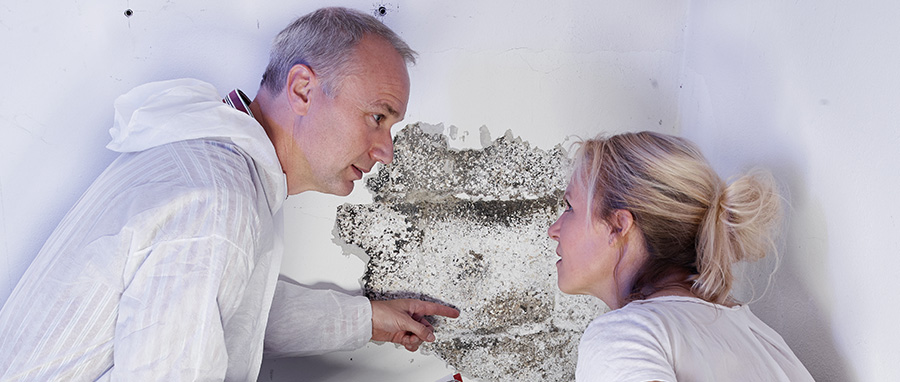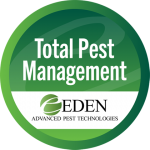Also known as an NPMA-33 form, a Wood-Destroying Insect (WDI) report is a detailed examination that identifies potential damage caused by various wood-hungry insects, such as termites, carpenter ants, carpenter bees, and wood-boring beetles.
For buyers, it provides crucial information about the current condition of your property, highlighting areas that may require repair or treatment. For sellers, a clear WDI report can improve the marketability of your property, giving potential buyers confidence in their purchase. Additionally, lenders often require a WDI Report before approving a mortgage.
Eden Advanced Pest Technologies’s detailed WDI inspections and reports identify any potential damage caused by wood-loving pests. Simply reach out to our team of licensed residential pest control professionals to arrange a detailed evaluation of your property with detailed reporting.
By obtaining a WDI Report from us, buyers and sellers (and other businesses in between) can have peace of mind knowing that your home is examined properly for the silent destruction caused by these insects.
How Do I Get a Wood Destroying Insect (WDI) Report (or NPMA 33 Form)?
To get a WDI report, you need to contact a licensed residential pest control professional and schedule a thorough inspection of your property.
With Eden Advanced Pest Technologies, securing a WDI inspection appointment is a straightforward and essential first step. After scheduling an appointment, our certified inspectors will meticulously examine the property structure. We focus on vulnerable areas where wood-destroying insects are most likely to cause damage. During the inspection, we carefully analyze accessible areas such as the foundation, crawl spaces, basements, and attics, looking for signs of wood-destroying insects.
After the inspection, our findings will be documented in the NPMA-33 form, detailing any active infestations, historical evidence of past treatments, and potential areas of concern that might require further investigation or preventive measures. The report provides a comprehensive overview of the property’s condition, including visible signs of insect activity.
At Eden Advanced Pest Technologies, we understand this inspection is not just a formality, it’s a crucial step in property-related processes like home buying. With our expert services, you can proceed with transactions confidently, knowing all the facts about your property’s structural integrity.
What Are Wood-Destroying Insects?
‘Wood-destroying’ insects describes a diverse group of pests that feed on or nest in wood, causing significant damage to the structural components of buildings over time. These insects have unique characteristics and ways of damaging wood:
- Powderpost Beetles
- Carpenter Ants
- Carpenter Bees
- Termites
Find out more about our termite-specific extermination services here.
Signs of Wood-Destroying Insects
Being aware of the common signs of these pests can help you take swift action to address infestations before they become severe. But if an infestation is already present, a pest control expert will look for these key signs:
- Wood Shavings (Frass): Wood shavings, or frass, are often found near the entry points of carpenter ants or wood-boring beetles. This sawdust-like material is created as these insects excavate wood to create their nests or tunnels.
- Hollow-Sounding Wood: Tapping on wooden surfaces that sound hollow can indicate internal damage caused by termites or wood-boring beetles. These insects consume the wood from the inside out, leaving a thin outer layer that may appear intact but is structurally compromised.
- Small Holes in Wood: Carpenter bees and wood-boring beetles create small, round holes in wood as they enter and exit. These holes are typically about the size of a pencil lead and are often surrounded by frass or sawdust.
- Discarded Wings: Winged termites or ants, known as swarmers, emerge in large numbers during the spring and summer to mate and establish new colonies. Finding discarded wings from swarmers near windows or light sources is a sign of an active infestation.
- Blistering or Darkening Wood: Subterranean termites feed just below the surface of the wood, causing it to blister or darken. This damage can often be seen in wooden floors, walls, or ceilings and should be investigated further if noticed.
- Mud Tubes: Termites build mud tubes to travel between their underground colonies and their food source. These tubes are typically found along the foundation of your home, in crawl spaces, or in basements.
Get In-Depth Reports on Wood-Destroying Insects Here
Investing in a professional WDI inspection is a crucial step in evaluating and maintaining the value of your property – whether you’re buying or selling. So don’t wait until it’s too late!
With Eden Advanced Pest Technologies’s [year] years of expertise and dedication, you can rest easy knowing your home is in good hands. Secure a WDI Report from us, and rest easy knowing your property has been thoroughly checked for any signs of silent, wood-destroying insects. Contact us today to schedule your comprehensive WDI inspection.
Back to Residential Pest Control

